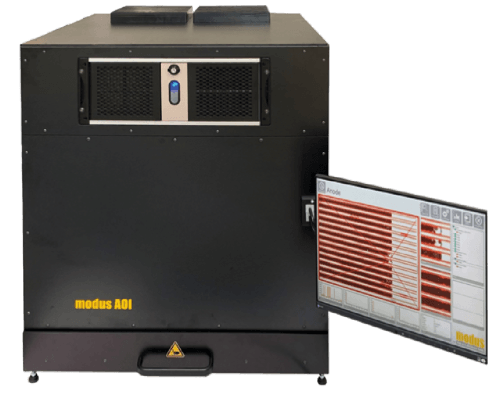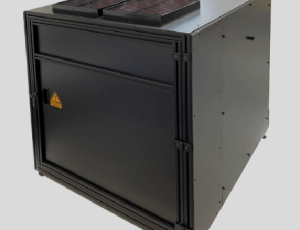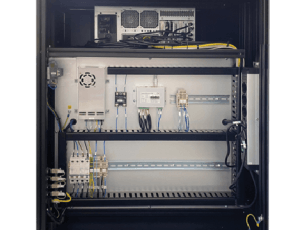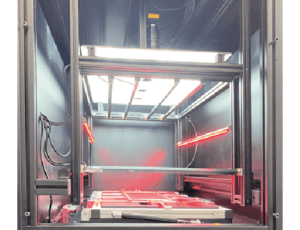FUEL CELLS bipolar plates inspection
modusAOI MCS42
The system comes with four 42 megapixel cameras and a high-performance control unit. LED lighting including LED control is also included in the delivery. The entire picture of the image analysis is orthogonally calibrated.
Characteristics
-
This system can meet the toughest requirements for the inspection of bipolar plates in various production stages.
-
The system has been adapted to the high requirements of the inspection of bipolar plates. The image acquisition time of approx. 2,5 seconds with a resolution of 24 um is outstanding.
-
Inspection with the high-resolution system cameras is carried out using the tried and tested modusAOI software. Our production process is certified under ISO 9000.
Technical Information
Camera unit C42
-
Resolution 4 x 42 megapixels =168 megapixels (21456 x 7716 pixels) aspect ratio 2:3 per camera
-
RGB colour filter from CMOS sensor, colour intensity 24 bit
-
Seamless stitching of 4 camera images (combined image for one test plan)
-
DMC code automatically detected
-
System-PC
-
Intel i9-10980XE
-
64GB DDR4-RAM
-
2 x 1 GB/s network interface
-
I/O modules, 1 x 1 TB NVMe SSD
-
2 x 4 TB NAS HDDs SATA3
-
Windows 10 Professional/LTSC 64 Bit
-
Acronis backup software
-
keyboard
-
mouse
-
operator keyboard
-
24” full HD IPS 16:9 monitor
-
Operating range
- default FOV: 450x180mm, Customized FOV possible
Inspection Speed
- image acquisition ~2,5 seconds, processing time (during handling) ~7 second
PCB JIG for fixing device under test
-
Single system
-
Ergonomic vaccum frame fixture for the device under test
-
Dimensions and weight
-
Camera unit (L*B*H): 39 x 39 x 40 mm
-
AOI box (L*B*H): 829 x 788 x 1011 mm
-
Connection values and setting conditions
-
230 V / 50 Hz P1 or 110 V / 60 Hz
-
Consumption: 300 W
-
Temperature: 5° C - 35° C
-
Humidity: 10 % - 80 % non-condensing
-
Test possibilities
- Position and minimum thickness of the graphite coating in the central area
- Checking the surfaces that should not be coated
- Coating contamination (graphite/screenprint)
- Testing of a defined target contour in screen print
- Damage to the metal at the edge (balcony) of the workpiece
- General damage such as deformation and scratches



